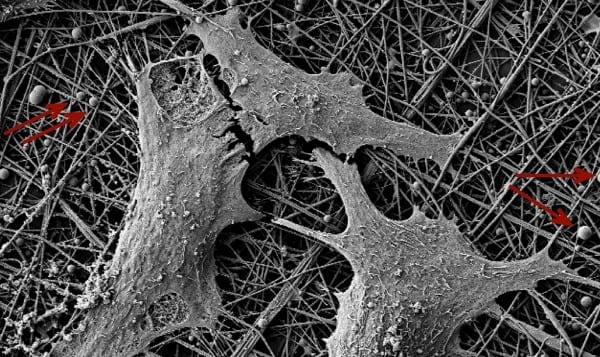 Tissue engineering has been heralded as a highly promising approach to regenerate a wide range of organs and structures in the human body compromised by injury or disease. Tissue engineering uses resorbable scaffolds made of natural or synthetic materials which guide tissue-regeneration.
Tissue engineering has been heralded as a highly promising approach to regenerate a wide range of organs and structures in the human body compromised by injury or disease. Tissue engineering uses resorbable scaffolds made of natural or synthetic materials which guide tissue-regeneration.
Like their non-resorbable permanent implant counterparts, however, these scaffolds can be colonized by bacteria, and the ensuing infection can have catastrophic consequences. Now, new research aims to develop a method to combat such infection. Using a nanofiber mat as a model scaffold, anionic microgels were electrostatically deposited on the fiber surfaces by a research team based in the US. They subsequently loaded the microgels, again by an electrostatic self-assembly process, with an antimicrobial peptide.
The resulting structure very effectively inhibits colonization of the scaffold by staphylococcal bacteria while still promoting the adhesion, spreading, and proliferation of osteoblasts. Hence, this approach is one that can be used to modify biomaterials surfaces in order to promote healing and simultaneously inhibit infection.

















